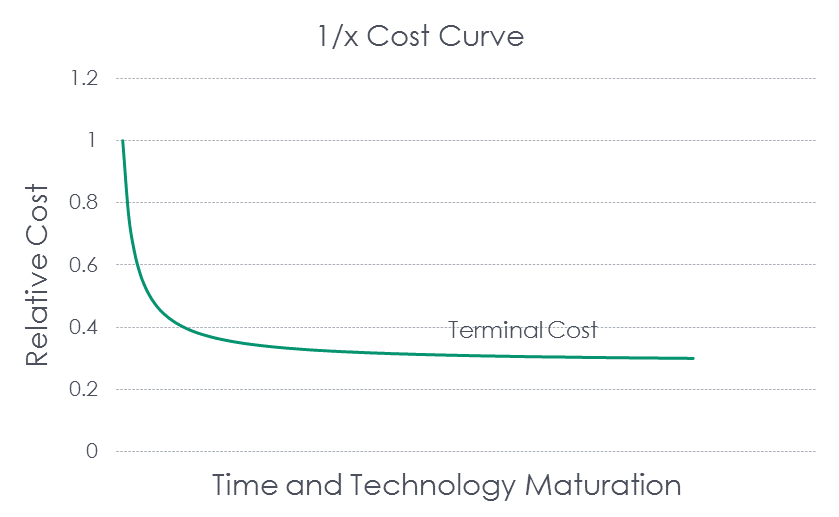Last week I wrote about understanding the customer and knowing what they want, whether the customer is the utility, regulator, or the end user of energy. Taking this a step beyond, the customer/client may not know what they want. For example, a hypothetical customer may want to control all energy use in their house from a smartphone, 100% renewable energy, and a smart-grid connected electric car.
I am convinced once the hoopla settles, customers will want (1) cheap, reliable energy, and (2) any help to be more successful.
Three weeks ago, I wrote about Messing with Near Perfection. That post covered distributed energy resources (DERs). It described that utility-scale DERs would make sense in many cases, but 100,000s of customer-side DERs won’t end well or be cost effective.
Nobody argued with any of that, but I did get a number of comments and questions on, guess what, reliability in case of outages. A $500 generator from the local home improvement store keeps the beer cold, the ice cream hard, a few lights on, and delivers coffee in the morning. It only needs to run a few hours a day, every few years. This was the consensus.
Electric Cars
Let’s advance the story to this post’s subject: electric cars. An early post on the subject dates back 6.5 years: A Frivolous Novelty. Let’s see how this soothsayer (me) has performed.
A report by Arthur D. Little (a consulting firm) that hardly, if any, of you have heard of delivers findings of life cycle costs and environmental impacts of electric vehicles versus gassers. The report is Battery Electric Vehicles vs. Internal Combustion Engine Vehicles.
My impression of Arthur D. Little is one of high regard. Roughly a decade ago, they published an excellent report on commercial refrigeration pertaining to supermarkets. It was very well done. We used that for setting program baselines.
Little refers to the classes of cars as BEVs vs. ICEV, which you can decode via the study’s title above. Since I loathe acronyms, I will instead refer to them as electrics and gassers.
Little’s assessment includes “every stage of the vehicle’s lifecycle, from R&D and production, including sourcing of raw materials, through ownership and end-of-life disposal.” It uses a level playing field, void of subsidies and candy.
Life Cycle Cost of Electrics v Gassers
Electrics’ advantages include substantially lower fuel cost, simplicity with lower maintenance costs, and less net emissions of CO2. Here is a great nugget: battery costs have declined from $1,126 per kWh in 2010 (when I wrote Frivolous Novelty) to $300 in 2015. Very roughly, 200 miles probably requires 60-120 kWh. The fuel cost for electrics (10 cents per kWh) is roughly half that of gassers ($2.50 per gallon). By golly, the report states fuel cost is a ratio of 9.4 to 4.4; advantage, electric.
Eye Opening Environmental Impacts
Little also considered environmental comparisons of electrics and gassers. Summing it up, Little states, “the manufacturing process for BEVs [electrics] generates a much more widely dispersed and damaging set of environmental impacts, offsetting a significant portion of their overall advantage with respect to greenhouse gas emissions.” Uh oh.
They also say, “the usage of heavy metals in the manufacture of lithium-ion battery packs for [electrics] combined with pollution generated by the US power grid (e.g. tailings from coal power plants) for the In-Use portion of a [electrics] lifecycle generate approximately three times the amount of human toxicity compared to [gassers].” Double uh oh.
They go on to say that source materials for lithium-ion batteries come from poorly regulated (and poor) countries like China and Congo. The Washington Post article writes about the hazards and exploitation of cobalt (a key ingredient for Li-ion battery production) miners in Congo.
Stubborn Physics
As I have noted many times regarding portable power, phones, tablets, and laptops are nothing like vehicles, whatsoever. Technology makes gadgets tiny, and they require tiny amounts of power. Vehicles are an entirely different thing. There will be no packing of 10,000 people onto a microchip in the future. See what I’m saying? Cars hall people and they will not void the laws of physics, and therefore, battery requirements will not subside.
State of the Electric Vehicle Market
Meanwhile, auto makers are losing a lot of money on electric vehicles, even with subsidies that would pay for half a compact gasser. Tesla reports a loss of $550 million “so far this year,” as of December 28, 2016, says The Wall Street Journal.
Tesla bought Elon Musk’s other struggling company, Solar City. Tesla is stronger? Wow. The bridge is out, and the train with no conductor is racing ahead, it appears to me.
The growth rate in electric vehicle sales is shown in the graphic below, taken from the Little report. Low gasoline prices are likely a big contributor to flattening sales growth.
